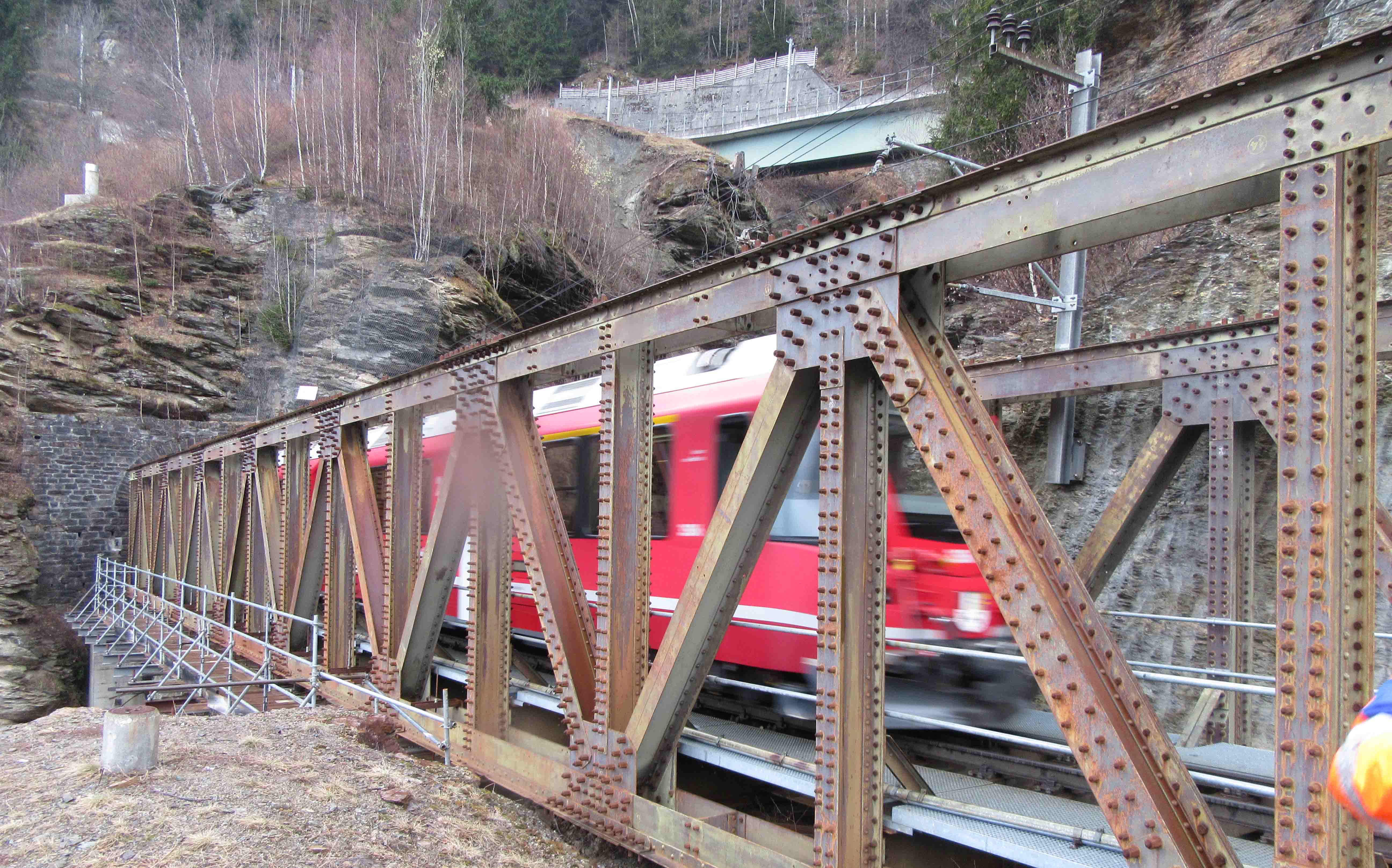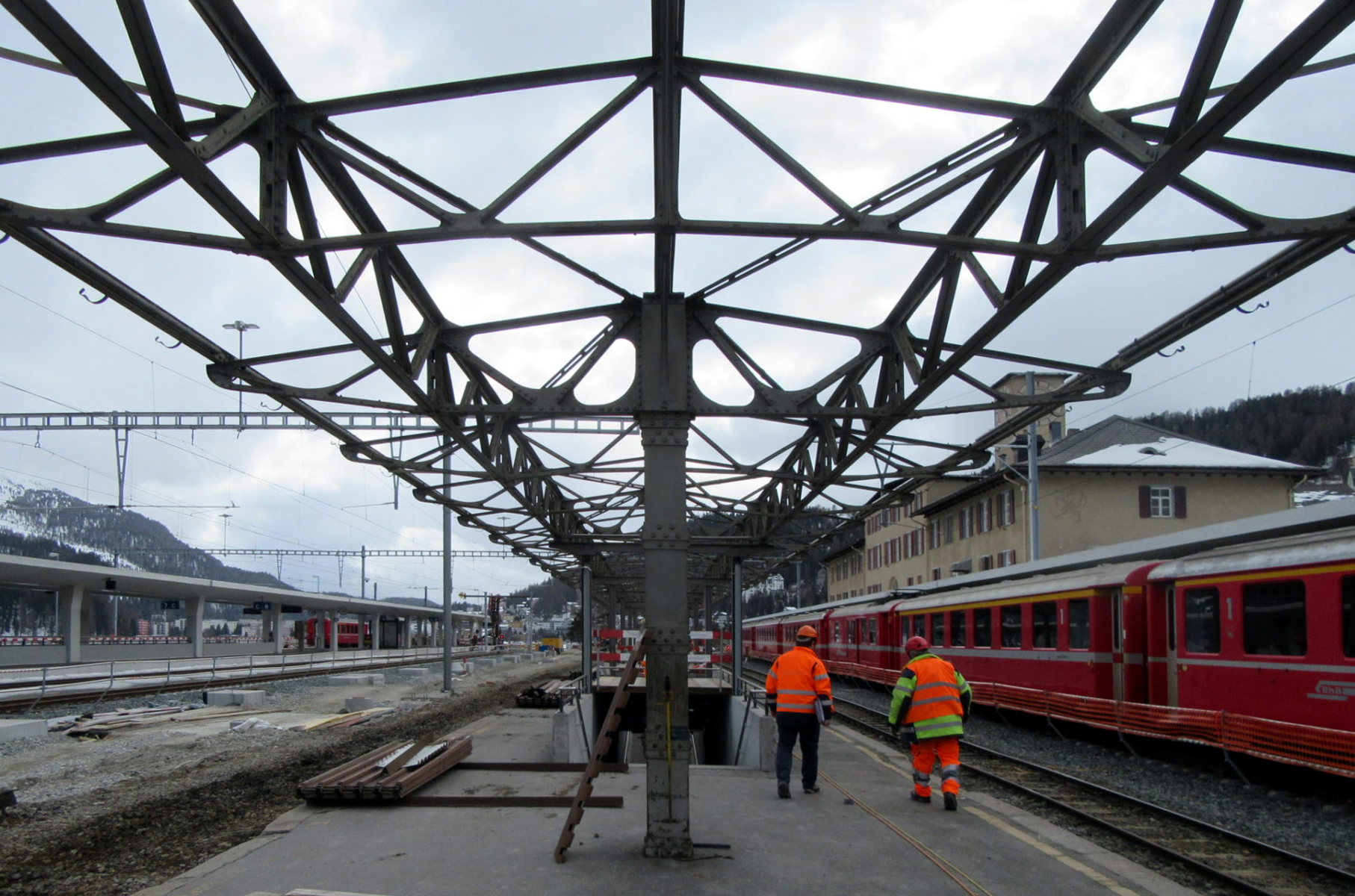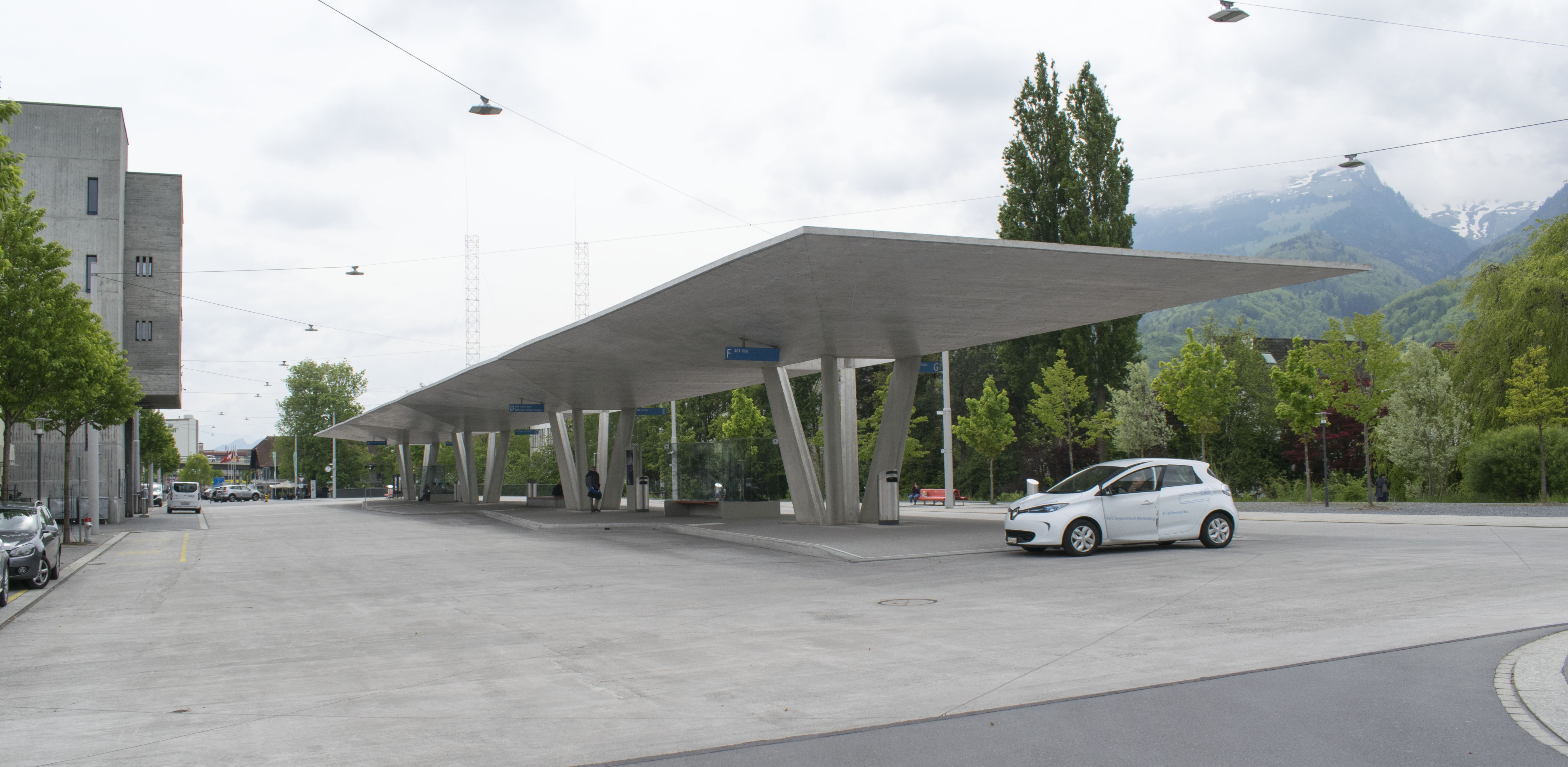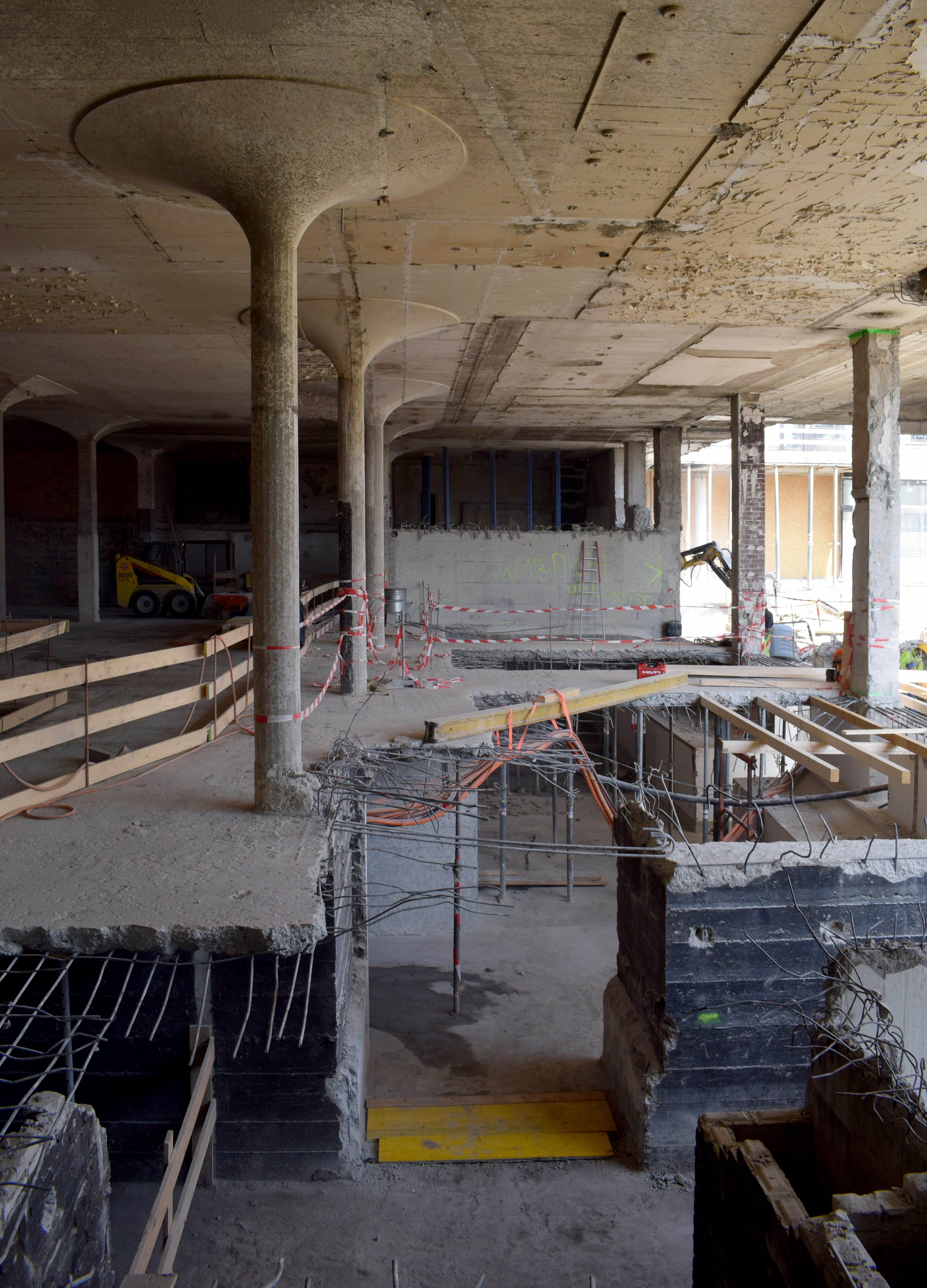Practice
Projects as a practising engineer in the office of Conzett Bronzini Partner AG in Chur, Switzerland
Lower Cavagliasco Bridge
Rhaetian Railway, UNESCO World Heritage Bernina Line
Poschiavo, Graubünden, Switzerland

In 2002, when faced with an emergency situation, the Rhaetian Railway installed a provisional 'Model 1936' military steel bridge at the lower Cavagliasco crossing along the UNESCO World Heritage Bernina Line. The parts of this 42m historical steel bridge were kept in storage since the time of the Second World War, with the bridge designed by Fritz Stüssi as a ready-to-assemble structure for rapid deployment and construction. Later in 2015, the steel bridge was planned to be refinished with new corrosion protection, allowing it to be kept in place for long-term service. At the same time, the structural behaviour of this historical Swiss military bridge was investigated through modelling, analysis, and a full-scale field testing program.
In contrast to historical steel bridges with typical riveted connections, Fritz Stüssi meticulously designed the ‘Model 1936’ military bridge with custom bolts and nuts. Unlike rivets, these custom bolts and nuts can readily accommodate prestressing and enhance the stiffness of the bridge's secondary stringer connections, and thereby encourage potential fatigue problems. Results from full-scale testing clarified modelling uncertainties and were used to support a standard fatigue analysis of the bridge's stringer connections. The results of this analysis showed that the stress range in the bridge’s stringer connections was within the prescribed fatigue limits from standards. A five-year periodic inspection plan was further implemented to ensure the bridge’s long-term integrity.
Links:
CBP Project Page
Infrastructure of the RhB
Accompanying research publication in the Journal of Bridge Engineering (American Society of Civil Engineers - ASCE)
Historical Railway Platform Roof
Rhaetian Railway, UNESCO World Heritage Bernina Line
Bever, Graubünden, Switzerland

With a new contemporary concrete roof structure planned to be built over the train platforms at the St. Moritz railway station, an existing historical steel roof was carefully disassembled and put into storage in 2016. Later, it was reassembled and installed at the nearby railway station in the small town of Bever, located about 10km away along the Rhaetian Railway’s UNESCO World Heritage Bernina Line. Due to the extreme snow loads in this area, the historical steel roof structure was planned to be further strengthened with additional tension members, so that the frequent and manual removal of snow from the roof could be avoided throughout winter. The historical roof members and their riveted connections were first thoroughly modelled and analyzed to identify critical connections and members. Additional modelling and detailing of the roof’s new tension elements were then completed, with the new elements working in parallel and alongside the roof’s historical trusses.
Links:
CBP Project Page
Bever Station Overview, RhB
Reviews:
Fadrina Hofmann, 'Ein historisches Perrondach zieht um', südostschweiz, Aug., 2020.
'Zusammenbringen, was zusammengehört', Engadiner Post, Sep., 2020.
Buchs Bus Station
Stadt Buchs SG
Buchs, Canton of St. Gallen, Switzerland

In ca 2013, Jürg Conzett and OSMB Architekten designed a new bus station for the small town of Buchs, St. Gallen, involving a series of four, 12.5 x 21.8m folded-plate structures. Later in 2015, initial structural modelling yielded an optimized geometry for this project, involving only a 12cm edge thickness for the slender concrete structures, as opposed to 16cm in the initial design proposal. As an alternative to costly sealants to protect against rain and weather on the top side of these structures, internal post-tensioning cables were preferred for structural and construction purposes. This post-tensioning design allows the concrete to remain in a continual state of compression, thereby avoiding cracking while upholding the structure's resistance to water and weather.
Links:
CBP Project Page
Reviews:
Tina Cieslik and Clementine Hegner-van Rooden, 'Elegant aufgeräumt', espazium, Aug., 2020.
Zurich Kongresshaus and Tonhalle
Hochbauamt der Stadt Zürich
Zurich, Switzerland

From 2017-2021, the Zurich Kongresshaus (Convention Center) and Tonhalle (Concert Hall) complex was intensively renovated and extended. As a structural engineer with Conzett Bronzini Partner AG, I worked extensively on these buildings from mid 2016 until early 2019 during the project's tendering and execution phases. In collaboration with Boesch Diener ARGE (Boesch Architekten, Zurich and Diener & Diener Architekten, Basel), this structural engineering work involved fire safety assessments of existing structures, consideration of existing and new foundations and geological conditions, and complex construction interventions within the existing buildings. Coordinating a team of draughtsmen and apprentices for the punctual delivery of around 200 construction plans, supervising new construction, performing on-site assessments of existing concrete structures, and searching extensive archival materials were all important aspects of this large-scale project.
Links:
CBP Project Page
Zurich Kongresshaus Homepage and Virtual House Tour
Reviews:
Clementine Hegner-van Rooden, 'Einzeleingriffe mit Gesamtkonzept', TEC21, Dec., 2018.
Werner Huber, 'Das grosse Happy End', Hochparterre, Sept., 2021.
Sabine von Fischer, 'Viel Licht und wilde Pflanzen für die nächste Generation: ein Neustart im Kongresshaus', Neue Zürcher Zeitung, Sept., 2021.
Judit Solt, 'Akte der Versöhnung', Baukultur: Qualität und Kritik, Feb., 2022.